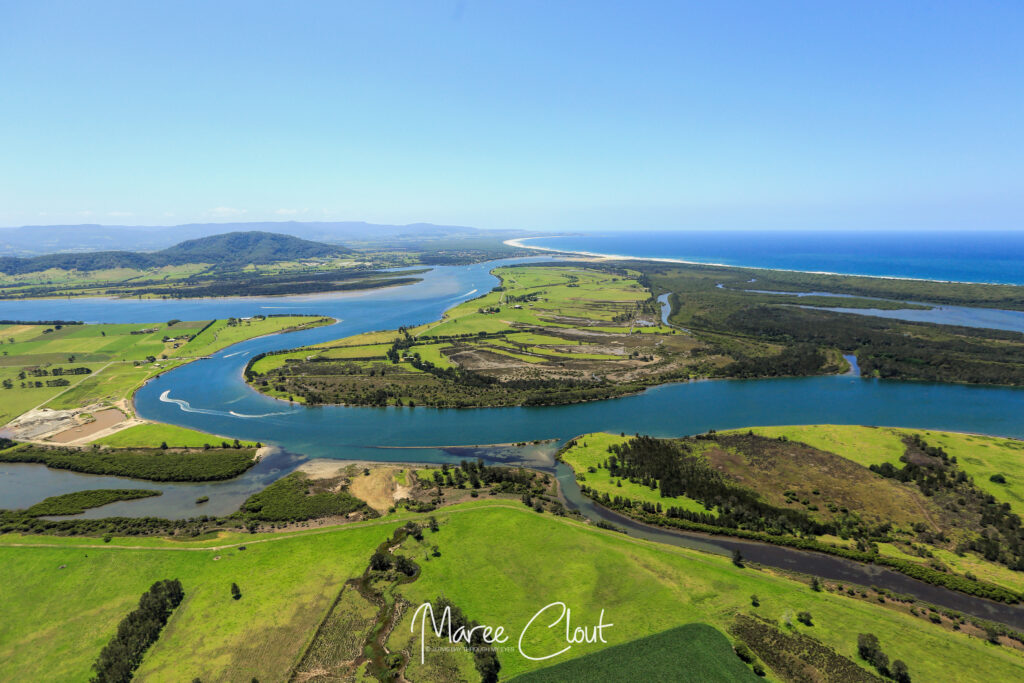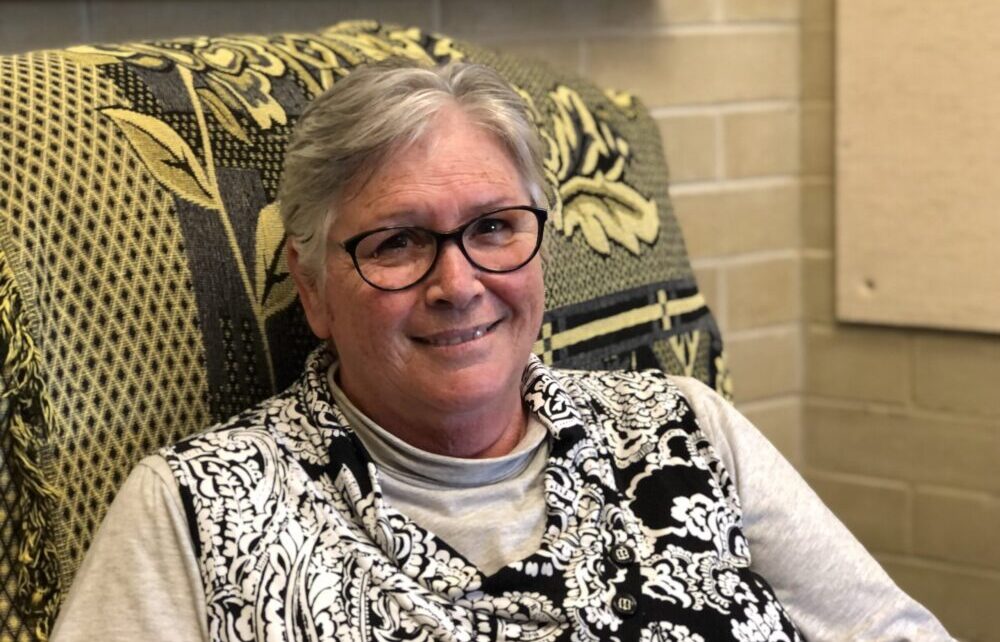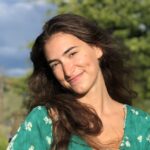Wendy virtually introduces me to her Country through a photo. “This is the Shoalhaven River, this is Jerrinja Country.” She points to different spots and I begin to see more than just green and blue.
“That’s the mountain, my mother grew up just down there. This is where the Shoalhaven River went out to the ocean at Shoalhaven Heads.” With a dramatic flourish she points to a different location: “This is the course it now takes. Because a coloniser wanted a way for his ships to get in there.”
“So this is my Country. It’s very green, very lovely and full of saltwater and oysters and things like that…”

An aerial view of the canal (centre left) connecting the Shoalhaven River (top) with the Crookhaven River (bottom). BroadAgenda is extremely grateful to Maree Clout for giving us permission to publish this beautiful photo. Picture: Maree Clout
And she continues to tease out her story for me. I am introduced to her family through this story, too.
“It was when I was quite old,” Wendy smirks as she says this, “when my niece had done law here at Canberra uni and her mother–my sister–was complaining about not ever having enough money. She had children, she’s a single mother, of course she never had enough money.”
“And my niece said to her, ” Get off your ass and go to university, and take Aunty Wendy with you!” and so I went.”
On interrogating ‘Proof of Aboriginality’
Wendy shares a story with me from when she was doing the Honours year of her Bachelors degree. “One day, I went into my supervisor’s office. I was pissed off because the Ngunnawal Centre–it was my second home, my community at uni–had started asking for proof of Aboriginality.”
“And she said to me, ‘What is that? What is that?’”
“You know, because I’ve lived with it, I didn’t understand that someone who was not First Nations Australian would never have heard of it. And so I explained it to her.” After many conversations and a lot of research for her Honours project, Wendy says she began to seriously interrogate the notion of ‘proof’ of Aboriginality.
“This is a little piece of paper that non-Indigenous, non-First Nations Australians, don’t have to carry. They don’t have to have this,” she emphasises. “Everyone has all kinds of cards left, right and centre. But there was this other little piece of paper..”
Wendy tells me about how she got her confirmation of Aboriginality. “It was 1991, and there was a job going at ATSIC (Aboriginal and Torres Strait Islander Commission). I thought, ‘I’ll go for that!’So, I phoned up and they asked, ‘Have you got your certificate?’”
“Well no, I haven’t!” was her reply.
Wendy was able to get one through her relationship to her mum, who was a member of a corporation at the time. “She went before the board and they said, ‘Well, she’s your daughter!’ and sent it over for me.”
View this post on Instagram
Somewhat shockingly, these breastplates – instruments of colonialism and oppression – are now considered antiques and collectibles by some.
“Basically, they were these strange tags telling the world who you were,” Wendy explains. Gorgets were imposed upon First Nations people by colonisers, as if all that could be known about them could be summed up on a piece of metal.
“Nothing has changed. Across all these governments… nothing.”
This knowledge spurred Wendy on to do her PhD.
On reimagining stories and knowledge
Wendy speaks about her PhD thesis, which she completed earlier this year, with conviction and a spark in her eyes. It is called, Koori Critical Storying and Reimagining to Reconnect with Memories, Archives and Country. “It was going to be around–I thought this was fascinating–what can I find out about my Maori great, great grandfather?”
“I got to the archive … and I couldn’t find anything. I mean, there were little tiny glimpses here and there. And after some time, I realised I was making up stories in my head to fit in with those glimpses, you know, building a picture.”
“That’s what eventually came to be Koori Critical Storying… a method to generate stories to fill in gaps, but there’s nothing that says this is a real, true history.”
Wendy continues: “It very much goes with what stories, storytelling, was like in my family. When my family, my grandmother, my other relatives, were telling stories… they knew these things. I didn’t know, it took me ages to realise that the stories my family told were not linear.”
Koori Critical Storying can be an antidote to things like the gorgets or proof of Aboriginality, because it does not use a colonial lens to define identity or find all the answers.
Wendy is a Jerrinja woman from the South Coast of New South Wales, but was born and grew up in Ngiyampaa Country in north west NSW. She is a lecturer and tutor at UC in Cultural Heritage and the Indigenous minor breadth.
Now that her PhD has been submitted, she says: “It’s left me in a space where I feel like I can contribute. I really wanted to contribute in this particular thing.”
“There are huge differences between the Western structures of university and Aboriginal knowledge and practices.”
“But it’s not just First Nations Australians who have problems when they think outside the box, when they’re thinking comes from ‘somewhere else’,” Wendy tells me. The academy is still “very structured.”
She mentions a friend who is not First Nations, who struggled through her PhD because the structures of university limited how creative she was allowed to be. One day, her friend asked, “Am I too obtuse?”
“No,” Wendy replied, “this is the way you meet the world!”
“There’s never a concrete way of seeing things,” Wendy tells me.
- Feature image: Wendy Sommerville. Picture: Jesse Blakers
Jesse Blakers is a Global Studies graduate who studied at the University of Canberra. She's also a budding academic, with a current focus on queer representation in media. Jesse recently interned at BroadAgenda.





